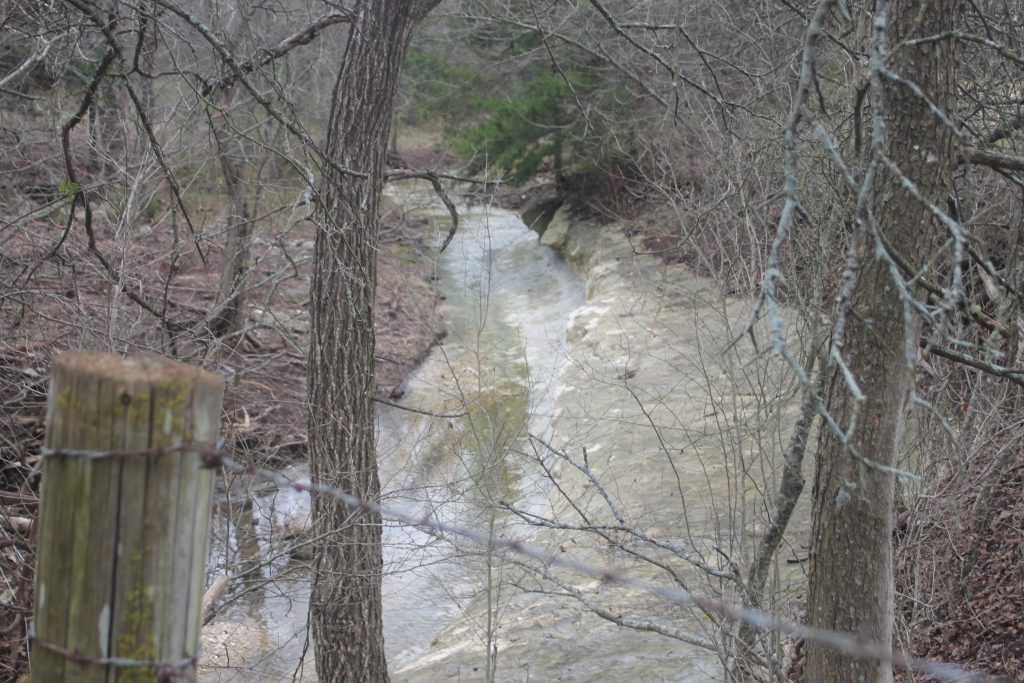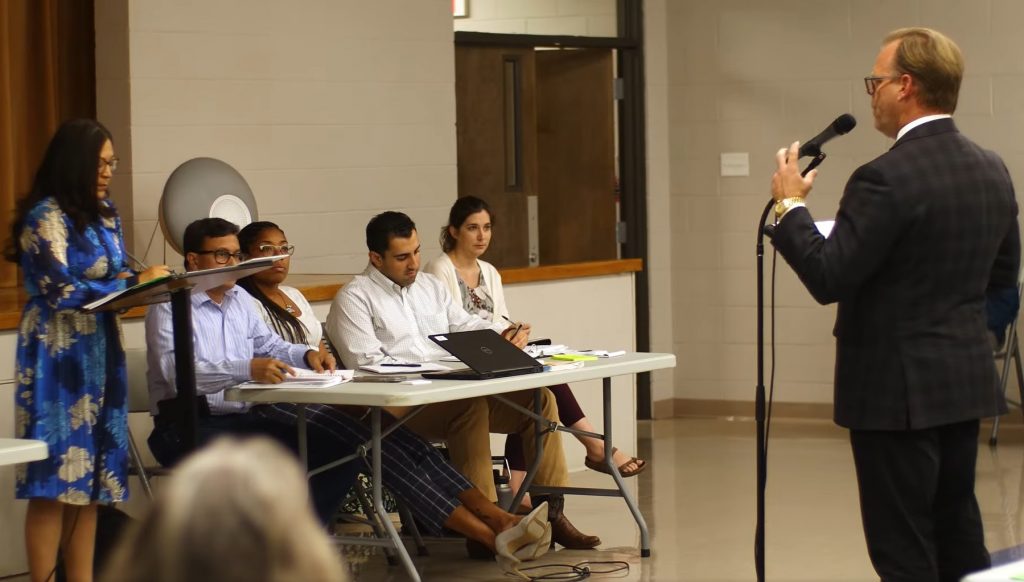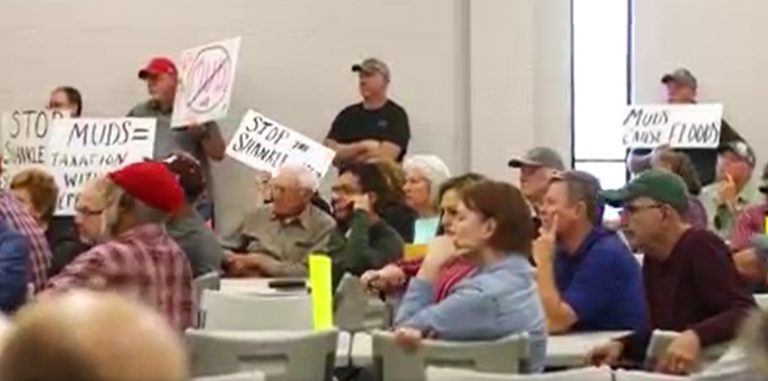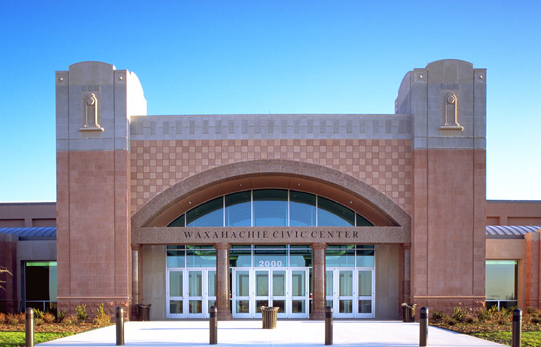Chris Roark, croark@cherryroad.com
To Wesley Tryon, the fight against a proposed municipal utility district (MUD) near his home in Ellis County feels like a never-ending battle.
Even with a win, more challenges await.
Now, Tryon and others are awaiting the fate of Lakeview MUDs 1, 2 and 3, which he said would damage his neighborhood and others around the county.
“We’ve been fighting this for a long time,” Tryon said.
A MUD is a special district, usually outside a city’s jurisdiction, that gives a developer an alternate way to fund infrastructure for a project. A MUD can issue bonds to fund construction of the infrastructure in the development, and it will use property taxes and fees from the residents who live within its boundaries to repay the debt.
MUDs were created by the Texas Legislature to provide utility services to developments that might not receive them from a nearby city. A MUD must be approved either by the adjacent city, the county or by the Texas Commission on Environmental Quality (TCEQ) if the city/county declines approval. MUDs are governed by a board of directors that includes residents of the MUD.
But cities and counties have little say as to what is built within a MUD, such as density, and that concerns local officials and the residents who live near these districts. Another concern are the open wastewater treatment plants that are constructed in the MUDs, thus allowing for higher-density development – more than one lot per acre.
There are multiple MUD proposals throughout Ellis County, and most of them have organized opposition from impacted residents and city and county leaders.
Eric Allman, an attorney with Perales, Allman and Ice, P.C., is helping residents fight the Lakeview MUDs. He said the MUDs involve dense development near areas that aren’t dense.
“The districts are only supposed to be formed when they’re necessary, and they don’t seem to be necessary in some of these areas,” Allman said.
Lakeview MUD
Tryon has been leading the fight against the proposed Lakeview MUDs, which would be located near his home west of FM 664, east of Longbranch Road and north of Marshall Road/Blackchamp Road, just outside Waxahachie’s city limits. The three MUDs that total 960 acres and call for 2,848 lots/units, according to a map provided by Ellis County. Tryon said his understanding is the development would include single-family and multi-family with some retail.
The opposition began in 2020 and continued in 2023 when TCEQ denied the MUD creation. Tryon said that’s the first MUD in the county to be rejected.
But now the developer has requested a Texas Pollutant Discharge Elimination System (TPDES) permit for a wastewater treatment facility on the site. According to a map of the project, the TPDES would be located approximately 200 feet northeast of where Blackchamp curves from north to west.
Tryon said he has several concerns with the wastewater treatment plant, which would discharge 1.2 million gallons of treated wastewater per day (MGD).

Tryon said the effluent would be dumped into the creek that runs along Blackchamp east of his property, and into Conservation Lake No. 10, which backs up against his property.
“I don’t need my animals drinking from that wastewater,” said Tryon, who owns cows, chickens and a horse. “I don’t want the kids playing in it.”
The discharge would then go to Conservation Lake No. 11, under US 287, into Waxahachie Creek and into Downtown Waxahachie before ending up in Lake Bardwell.
“This isn’t just about my property,” Tryon said. “I’m concerned about what this is going to do for the whole county.”
He said the odor from the effluent is a big concern.
“The south wind would blow that aroma on to the new developments around here,” Tryon said, pointing to Bob White Estates located less than one mile to the north of the TPDES.
Tryon said the effluent going into the creeks would also create flooding issues. He said Conservation Lake 10 flooded after one day of heavy rain in January.
“Can you imagine what this would be like if 1.2 MGDs of wastewater is dumped into it?” Tryon said.
He said several properties along Blackchamp have already faced flooding issues, too.
Tryon said he’s also concerned about the effect the MUD will have on property values. He said many homes in that area have one home per acre, but he said what’s being proposed is four to five homes per acre.

On Dec. 30 a contested hearing involving all impacted parties, including the Tryon family, Ellis County and the city of Waxahachie, took place regarding the TPDES request. Next, the State Office of Administrative Hearings (SOAH) will hear the matter and make a recommendation. The date for that hearing hasn’t been set. Then the TCEQ Commission will issue its ruling.
Tryon said he’s concerned if the TPDES is approved it will pave the way for the developer to reapply for the MUD.
Shankle Road MUD
Ernie Martinek knows what it’s like to constantly fight MUDs.
Martinek has been leading the charge against the proposed MUD on Shankle Road, near his home east of Palmer.
According to county records, the Shankle MUD would include 811 homes on 181 acres.
Martinek was optimistic the MUD would never come to fruition after TCEQ denied the MUD creation in November.
However, on Dec. 18 the commission voted to approve a TPDES permit for a wastewater treatment facility on the property. Per TCEQ records the permit would allow for the discharge of 500,000 gallons of treated wastewater per day.
Like Tryon, Martinek is concerned about wastewater discharge and density.
“MUDs have a purpose in more remote areas where there aren’t many facilities and infrastructure available,” Martinek said. “But the concerns we have on these MUDs is the strain on the utilities, like water, as well as schools, emergency services and roads. That should concern everyone in the county.”
The developer was denied reconsideration of the MUD denial, and he has until Feb. 26 to file an appeal with the District Court in Austin.
Meanwhile, Citizens Against Ellis County MUDs filed for reconsideration of the TPDES.
Other MUDs
A map provided by Ellis County and last updated in August of 2024 shows several other MUDs proposed for the county.
In some cases TCEQ has approved the MUD creation while the TPDES is pending. In others, the MUD and/or TPDES have been approved, but the appeals process is ongoing.
Hi View Ranch and Highland Lakes are proposed to be located south of FM 875 and east of Baucum Road, west of Waxahachie and south of Midlothian.
Combined they are expected to encompass 3,165 acres and feature 11,280 homes. Ellis County Judge Todd Little, who has been vocal against MUDs, said that means 30,000 more people in that area. He said that it would be located adjacent to Emory Lakes, a 3,000-acre project – not a MUD – proposed in Waxahachie.
Waxahachie Creek Ranch is proposed to be located east of FM 877 and north of FM 984, southeast of Waxahachie’s city limits. It calls for 1,969 lots/units on 531 acres, according to the map.
Ellis Ranch is proposed to be located at the northeast intersection of FM 878 and Gibson Road, just east of Waxahachie’s city limits. Plans call for approximately 4,000 lots/units on 1,700 acres, the map shows.
Terra Vista, south of FM 813 and west of Gibson Road, calls for 1,944 lots/units of 480 acres.
Palmetto MUD calls for 643 lots/units on 192 acres south of FM 878, north of FM 879 and west of Ike Road.
On the west side of the county Circle S MUD is proposed for the southeast intersection of FM 875 and FM 157. It calls for 1,899 acres with 4,000 lots/units.
Brahma Ranch 2, proposed for 437 acres west of FM 157 and north of FM 2258, is set to include 1,500 lots/units.
Resident Robyn Farrell is leading the fight against MUDs on the west side and shared others’ concerns, including flooding, wastewater discharge and how small towns like Venus and Maypearl will handle the growth.
“School districts will be overcrowded,” Farrell said. “Districts can’t build schools fast enough, yet they have to provide children a seat in the classroom.”
Development company Jireten has applied for a TPDES permit on 130 acres south of FM 387 (Butcher Road) and S. Ring Road on Waxahachie’s northeast side. County records state the development would include 600 lots/units.
Jireten representative Keith Davis said the project is not a MUD but rather a public utility district (PUD). He referred further questions to an attorney, who did not respond to a request for comment.
Allman, who is representing opposition to that project as well, said regardless of the type of district, nearby residents don’t support it.
“I think the concerns are the same with relationship that it’s a dense type of development in an area that doesn’t have that type of density at present, and it would fundamentally alter the character in the area,” Allman said.
Developers and attorneys representing several of the MUDs did not respond to requests for comment.
County and city opposition
Little said the county has protested MUDs for the last three years. Like other residents he’s concerned about the possible effects of MUDs, including wastewater discharge.

He said often times the county’s engineers discover the amount of wastewater discharge is greater than what the developer says it will be during the application process.
“The numbers are in the favor of minimal impact, when in reality they are much higher numbers, and they are flowing out on the private property of our citizens,” Little said.
Little said he’s also concerned about the impact on the water supply in the county.
“Water supply in some of these rural areas is essentially unavailable,” Little said.
County leaders aren’t the only ones opposing MUDs. Shon Brooks, executive director of development services in Waxahachie, said the city is opposing the Lakeview MUDs and Highland Lakes.
The Ellis County Commissioners Court, along with city councils in Waxahachie and other cities passed resolutions in 2023 to oppose MUDs.
Legislative help coming?
Little said he and approximately 25 other county commissioners and judges from across the state have sent a letter to the Texas Legislature expressing their concern over MUDs.
“There are lots of counties supportive of our efforts to battle against unsustainable developments, like municipal utility districts,” Little said.
Meanwhile, bills have been filed at the Texas Legislature to address MUDs, including House Bill 363, filed by Rep. Keith Bell of Kaufman County and its identical Senate Bill 102 by Sen. Bob Hall of Rockwall.
As presented the bills would require the MUD applicant to notify county commissioners of a proposed MUD in their jurisdiction and to inform them of their right to review the application and submit their opinion.
Currently, Little said, a MUD can be passed administratively (through TCEQ) or by a vote from the Texas Legislature. He said developers often choose the easiest path for them.
Little said either bill would need to be limited to certain counties around metropolitan areas to reduce opposition.
“Maybe we bracket that bill with, ‘Commissioners Court approval is required by resolution in the event the county is under, say, 900,000 people,’” Little said. “Then you get 20 to 30 counties impacted rather than 50.”
Other filed bills related to MUDs include HB 447, also by Bell, which would mandate MUD road bonds to require a traffic impact analysis.
HB 602 (Rep. Valoree Swanson) would require a MUD director to own land subject to taxation in the district.
HB 2010 (Rep. Cody Vasut) would allow TCEQ to dissolve any district that is inactive for between five and 10 consecutive years and would require TCEQ to dissolve it if it’s been active for 10 consecutive years or more.
HB 2015 (Rep. Erin Zwiener) would require TCEQ to consider water conservation before granting or denying a MUD.
Seeking a compromise
Little said should MUDs get approved by the state, it’s critical that the county and the impacted cities use developer agreements to minimize the impacts. He said actively protesting the MUDs helps.
“We have been very successful in delaying, improving or getting one or two of them denied because of technicality,” Little said, adding that the county has spent approximately $250,000 to oppose MUDs.
“What we’ve tried to do is negotiate for commercial property tracts,” Little said. “Through economic development, create an industrial site, or a technology site, in some of these MUD districts. And we’ve been successful in some of them. But our goal is to try to make these districts go into the cities’ ETJ and then enter into development agreements with the city so they will eventually be annexed as they receive water and sewer services.”
Little said developer agreements have helped limit the number of residential lots. For example, Midlothian successfully negotiated an agreement for Circle S, cutting the number of single-family units down from 8,000 to 4,000. Half of the development will be industrial/development.
Little said minimizing the high density is important, referring to the six units per acre that often come with MUDs.
“In Ellis County we’re used to one unit per acre,” Little said. “How do you compromise on that? Well, three units per acre or two units per acre. Quarter-acre lots, so three to four units per acre. As long as we can solve the problems of flood control, fire, police, etc.
“You look at these California wildfires, this shows rooflines that were 7.5 to 10 feet apart where chimneys were falling into other houses creating the fire next door,” he said. “That’s just one recent example we can use as to why we don’t think these are good developments.”
Looking ahead
Meanwhile Ellis County will continue to support legislation that offer limits on MUDs.
Little said the county will also keep joining cities in their opposition to MUDs and help them work out a compromise when they’re approved.
He knows there’s likely more on the way, given that the Ellis County’s land mass outside of extra-territorial jurisdiction is 78 percent.
“They have a lot of places to go, which is why we’d like to weigh in on what’s approved and where it’s approved,” Little said. “We’re not opposed to development. Since my administration we’ve had billions of dollars of development in this county in six years. We just want to pick the best options for our county to pick the best quality of life we can for our citizens.”




